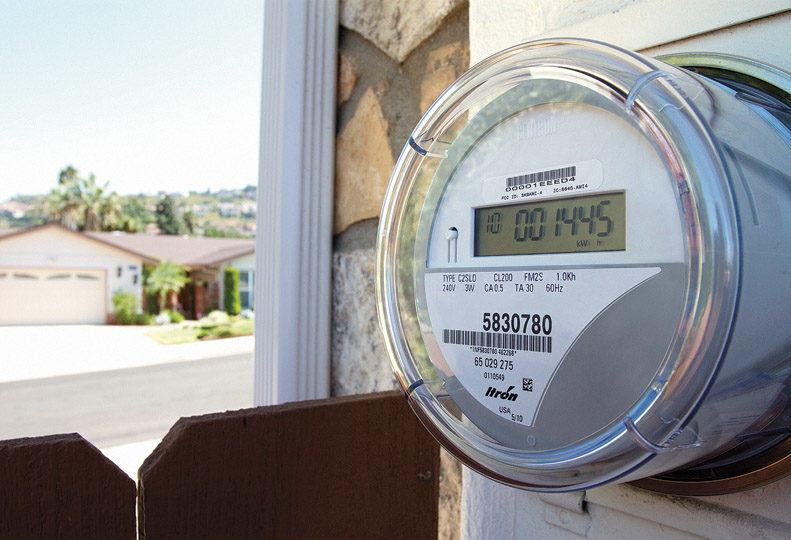
Home » Avista starts ramp-up for smart grid installation
Avista starts ramp-up for smart grid installation
Itron technology expected to help usage management

May 19, 2016
To modernize its electric and gas network, Avista Corp., of Spokane, says it will begin replacing current electric and natural gas meters in Washington state next year with digital meters made by Liberty Lake-based Itron Inc.
Avista spokeswoman Laurine Jue says Avista is early in the planning stages of the rollout. The total cost of replacing 263,000 meters in Washington and installing Itron’s developed software for power grids hasn’t been determined.
“The project planning has just started and we’re very early in identifying what the total cost might be,” Jue says. Avista expects to have more specifics by early fall, she says.
While contract negotiations between the companies is ongoing, Jue says Avista expects it will take six years to complete systemwide upgrades.
A key benefit for consumers in the future is that they will be able to track energy usage online during the course of the month, giving them a better idea as to whether they need to cut back on usage before the end of a bill cycle.
In 2009 and 2010, Avista conducted a rollout of the smart meters and grid software for 13,000 customers in Pullman and was pleased with the results, Jue says.
“We set up a web portal for customers to be able to enter to track their usage,” Jue says. “Customers can have email or text alerts sent to them to let them know where their usage is, allowing them to make necessary adjustments to stay within their budget.”
Jue says Avista hired an independent contractor to install the meters and new software in Pullman. In the larger modernization effort, the company doesn’t know yet if it will use its own employees or will contract to perform that work.
Says Avista’s website, “The technology creates the foundation for future customer benefits, including faster outage detection and restoration of service, plus near real-time energy use information and energy usage alerts.”
Avista has 375,000 electricity customers and 335,000 natural gas customers. The company provides energy services to customers in Eastern Washington, North Idaho and parts of southern and eastern Oregon.
For now, Jue says, it doesn’t have plans to incorporate smart meters and updated software for its customers beyond Washington.
“That would be in the hands of utility regulators in those states,” she says.
Of the upgrades for customers in Washington, Jue adds, “Modernization is a constant process, and this is one other step in that process.”
The smart meters communicate with utility grid software, which Itron named “OpenWay Riva.” The smart meters and grid software allow for private and secure two-way communication between each other, says Sharelynn Moore, Itron’s vice president of corporate marketing and public affairs.
“Itron is honored to be working alongside Avista as it takes the next step in modernizing our electric and gas network with Itron’s OpenWay Riva,” said Mark de Vere, president of Itron’s electricity business line, in a press release about the Avista agreement earlier this month.
Itron in the last three years has installed new smart meters for seven different utility companies around the world, Moore says. The meters and accompanying software have been installed for Itron customers in the U.S., Austria, Brazil, China, and the South Pacific island of Tonga.
Moore declines to reveal specific locations in the U.S., but says “a couple” of utility companies in the western U.S., and another on the East Coast, are now using the smart meters and OpenWay Riva software.
Moore says the previous modernization upgrade projects have lasted on average from two to three years.
Of smart meter technology, Moore says, “It’s the equivalent of going from a flip phone to a smartphone. The meters are doing more than just feeding information to the grid.”
Power grids can now communicate with each individual meter, she says.
OpenWay Riva uses radio-frequency wireless and powerline carrier communications to communicate with smart meters, Moore says.
Smart meters and utility software now can analyze power outages, are more effective detecting unsafe grid conditions, and can quickly make adjustments for improved energy performance, she says.
The new meters and software also are more adept at incorporating renewable energy sources for use in a utility company’s grid, Moore says.
The U.S. Department of Energy says the country’s current electric grid consists of more than 9,200 electric generating units with more than 1 million megawatts of generating capacity connected to more than 300,000 miles of transmission lines.
“Although the electric grid is considered an engineering marvel, we are stretching its patchwork nature to capacity,” the federal agency says.
The energy department says on its website that automation, new technologies and equipment communicating with power grids allow for a quicker response to rapidly changing electric demands.
Similar to the smartphone industry, the development of third-party applications in the utilities industry has grown substantially in the last few years. Moore says OpenWay Riva allows for additional applications to be installed in the grid network for improved performance, which can result in savings for customers.
Avista and Itron are among the 50 largest employers in Spokane County. Information provided by the companies to the Journal for its 2016 Book of Lists ranks Avista the 17th largest employer in Spokane County with 1,124 employees here, not including another 436 located elsewhere. Meanwhile, Itron ranks as the 45th largest employer with 478 workers in Spokane County, but the company has about another 6,525 employees located elsewhere.
The two companies are also two of the largest publicly traded companies in the Inland Northwest.
Hart Capital Management Inc., of Spokane, reported Avista had the largest market capitalization of the area’s 10 largest publicly traded companies for the first quarter of 2016 at $2.5 billion, followed by Itron at $1.5 billion.
Latest News Technology
Related Articles

![Brad head shot[1] web](https://www.spokanejournal.com/ext/resources/2025/03/10/thumb/Brad-Head-Shot[1]_web.jpg?1741642753)

